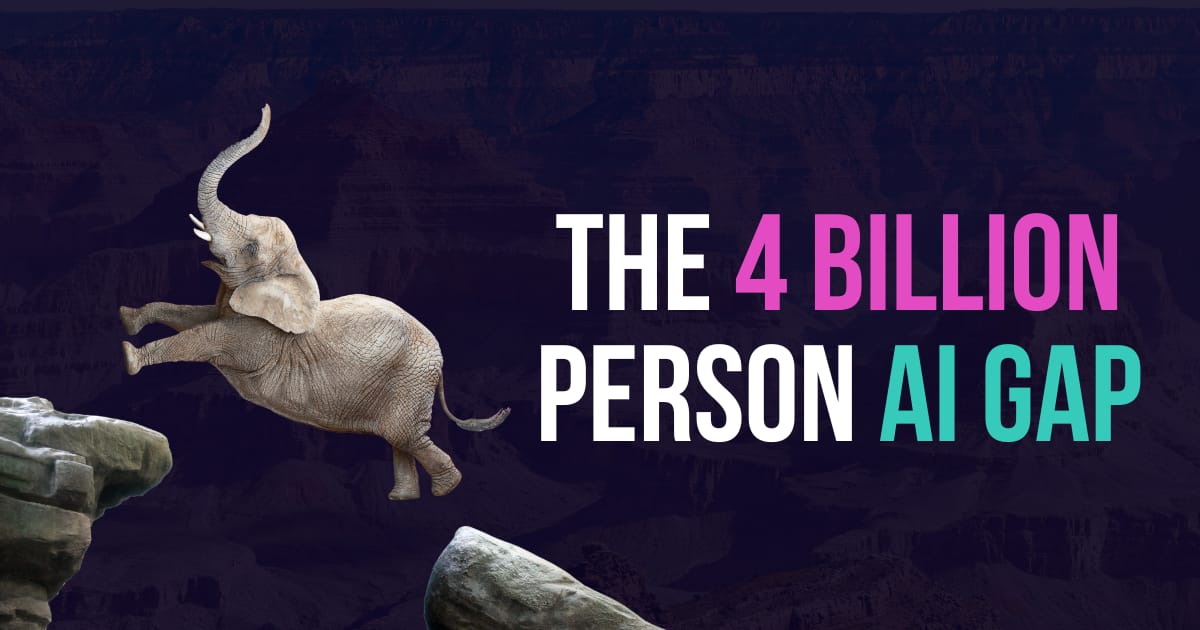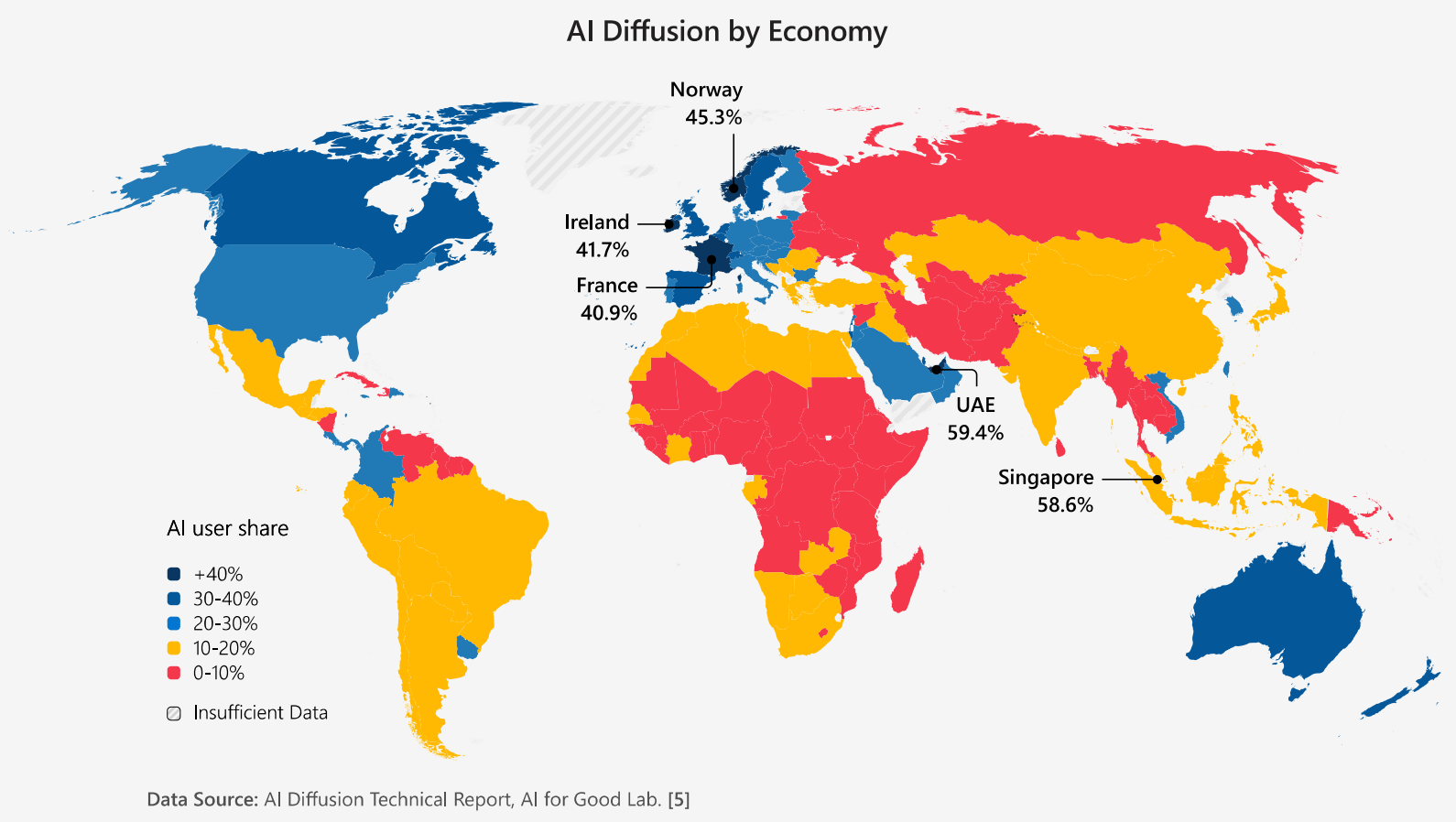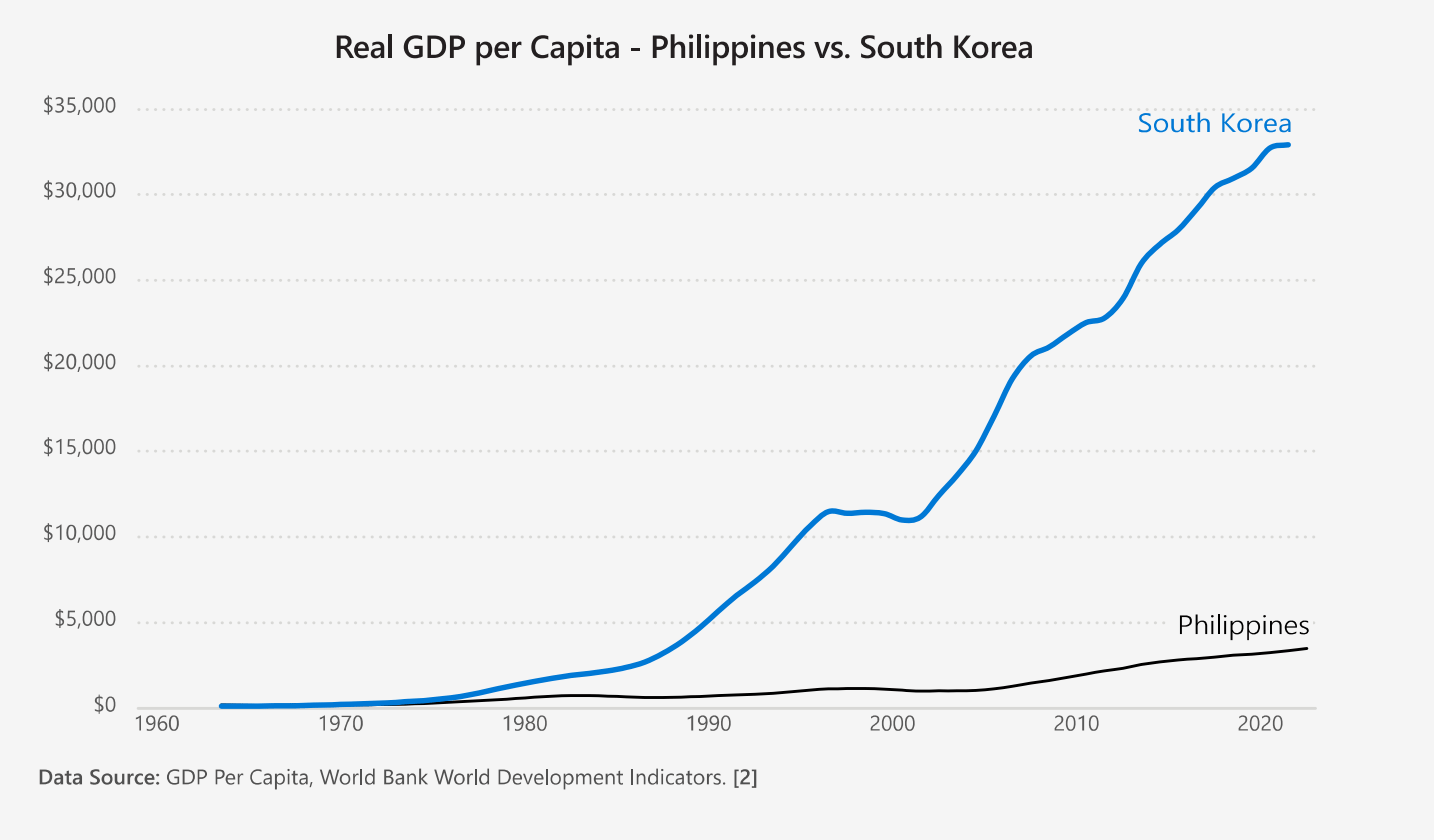- Enterprise AI Daily
- Posts
- The 4 Billion Person AI Gap: Microsoft’s Diffusion Report
The 4 Billion Person AI Gap: Microsoft’s Diffusion Report
Plus: Meta Burns Cash on AI Infrastructure, Reddit Goes to War Over Data, and Google's AI Stops 10B Scams Monthly
Microsoft just released a 90-slide, research-heavy 2025 AI Diffusion Report. The verdict: Everyone thinks they’re adopting AI, but only a sliver of organizations are seeing real impact. Even crazier, 4 billion people still can't access the basic infrastructure needed to use AI at all. Meanwhile, Meta just posted a $35B AI expense line, Reddit’s prepping for courtroom drama over data scraping, and Google’s trying to patch up Android’s AI vulnerability problem before hackers make it worse.
Let’s get into it.

Enterprise AI Group
A Digital Canyon the Size of the Grand Canyon
Microsoft surveyed over 3,000 enterprise leaders and practitioners across 11 countries, and the findings are a goldmine of insight (and warning signs) for any org betting on AI. Their new AI Diffusion Report reveals that while AI has become the fastest-spreading technology in human history with 1.2 billion users in just three years, nearly half the world's population lacks the electricity, internet, and digital skills needed to participate.
Think about that for a second. We're building the future of work, commerce, and society on a foundation that excludes 4 billion people. That's not just a humanitarian issue: it's a massive market failure that smart enterprises should be scrambling to address.

The UAE (59.4%) and Singapore (58.6%) lead in AI use among working-age adults, reflecting their long-term investments in digital connectivity and skills. Source: Microsoft 2025 AI Diffusion Technical Report
The report lays out what they call the "Three Forces of Diffusion"
Frontier Builders: The usual suspects like OpenAI, Google, and Anthropic are pushing the boundaries of what's possible.
Only seven countries currently host frontier-level AI models: the U.S., China, France, South Korea, the U.K., Canada, and Israel. Notice anything missing? The entire Global South.
Infrastructure Builders: The companies scaling these breakthroughs through networks and tools.
The U.S. and China together host 86% of global data center capacity.
Everyone else is fighting for scraps of the remaining 14%.
Users: The rest of us are trying to make sense of it all.
In the UAE and Singapore, AI adoption exceeds 58%.
Countries in Sub-Saharan Africa see adoption rates below 10%.
The Philippines-South Korea Story
Want to see how quickly the AI divide can create economic canyons? In 1960, the Philippines and South Korea had nearly identical per capita incomes. Both were comparable in demographics and education levels.
Fast forward to today: South Korea's economy surged with 6.2% annual growth, while the Philippines grew at 1.8% annually.

The result: South Korea is known for producing semiconductors and cutting-edge tech, while the Philippines remains tied to commodities and business process outsourcing.
South Korea's success is largely attributable to mastering digital technology and building industries around it, supported by government R&D partnerships with the private sector. Now imagine that story playing out globally with AI instead of semiconductors. That's what we're staring at.
The Language Problem Nobody Wants to Talk About
Here's where it gets uncomfortable for the West: Half of the internet's content is in English, even though English is spoken natively by just 5% of the world's population.
Countries with low-resource languages adopt AI at rates 20% lower than high-resource language countries, even under similar GDP and connectivity conditions. Your global AI strategy probably assumes everyone speaks the language of your LLMs. Spoiler: they don't.
What This Means for Enterprise Leaders
1. The Talent War is About to Get Weird
Countries that invested in digital infrastructure and education are adopting AI at notably higher rates. Singapore embraced AI with 59% of the working-age population using it. If you're competing for AI talent, you're not just competing with other companies: you're competing with entire countries that either did or didn't invest in digital foundations decades ago.
2. Your Addressable Market is Smaller Than You Might Think
Building AI products for the global market? Sub-Saharan Africa accounts for 85% of the global population without electricity. That's 750 million people who can't even charge a phone reliably, let alone run your AI-powered app.
3. Infrastructure Arbitrage is the New Labor Arbitrage
Remember when companies outsourced to countries with cheaper labor? The new arbitrage opportunity is infrastructure. Countries racing to build data centers and digital skills will become the new outsourcing destinations, but for AI workloads rather than call centers.
4. The ESG Angle You Can't Ignore
Your board is going to start asking uncomfortable questions about AI equity. Smart companies will get ahead of this by building AI strategies that work in low-infrastructure environments. Things like edge computing, offline-first AI, and models that run on basic hardware.
Here’s some extra data points that stood out:
Only 8% of companies are actually seeing transformational value from AI. Most are stuck in pilot purgatory or shallow use cases like chatbots.
Despite a flood of tool access, real capability-building is lagging, especially in governance, change management, and cross-functional integration.
High-performing orgs are investing more in internal education and responsible AI frameworks, not just external vendor solutions.
The most cited barrier: Too many disconnected initiatives
Translation: everyone’s building their own sandbox, no one’s building the playground.
If AI is going to scale like cloud did, it needs more than a budget and a backlog. It needs the less flashy stuff: cross-functional ops alignment, procurement reform, and upskilled middle management.
Bonus takeaway: Before you spin up another LLM project, audit your AI portfolio. Are you multiplying efforts, or multiplying impact?

Enterprise AI Group // Created with Midjourney
News to Know
Meta burns $35B on AI and says it’s just getting started.
Meta’s Q3 earnings reveal a staggering $35 billion investment in AI this year alone, with a warning that 2026 will be even more aggressive. The bet: AI-native consumer platforms, Meta Llama dominance, and in-house silicon to reduce dependency on NVIDIA.
Read more →Reddit CEO says “See you in court” to data scrapers.
With lawsuits from artists and media companies piling up, Reddit’s CEO says Reddit is ready to fight AI model trainers using scraped content without permission. This signals a new wave of IP enforcement and raises compliance alarms for any team using web-scraped models.
Read more →Android gets AI-native defenses, but hackers are catching up.
Google announced new built-in security layers for Android’s AI features including real-time behavioral monitoring, but attackers are adapting fast. Expect a cat-and-mouse game between security teams and generative malware tactics.
Read more →
CTV ads made easy: Black Friday edition
As with any digital ad campaign, the important thing is to reach streaming audiences who will convert. Roku’s self-service Ads Manager stands ready with powerful segmentation and targeting — plus creative upscaling tools that transform existing assets into CTV-ready video ads. Bonus: we’re gifting you $5K in ad credits when you spend your first $5K on Roku Ads Manager. Just sign up and use code GET5K. Terms apply.
TL;DR:
AI adoption hit 1.2 billion users in 3 years, but 4 billion people lack basic infrastructure to participate.
The Global North has twice the AI adoption rate of the Global South, creating a new digital divide.
Meta's burning $70B+ on AI infrastructure in 2025 (and that's just the start).
Reddit's catching AI companies in elaborate data-scraping traps worthy of a heist movie.
Google's AI is blocking 10 billion scam messages monthly on Android (take that, iPhone users).
Remember: Every transformative technology creates winners and losers. The question isn't whether AI will reshape the global economy, that part is clearly already happening in real-time. The question is whether we will help bridge the divide or make it worse.
Stay sharp,
Cat Valverde
Founder, Enterprise AI Solutions
Navigating Tomorrow's Tech Landscape Together
